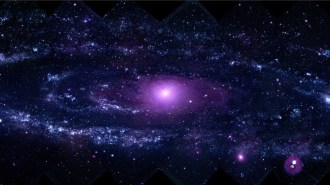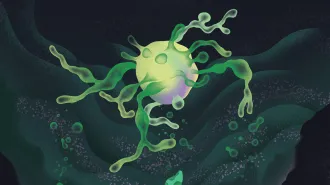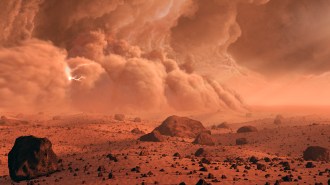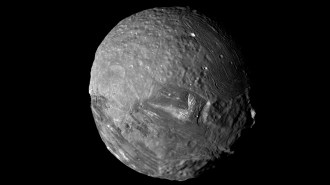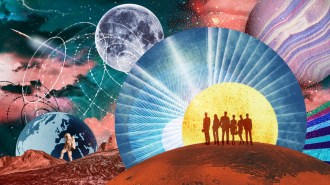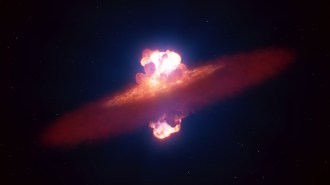To celebrate the Hubble Space Telescope’s 100,000th orbit, astronomers aimed the observatory at a firestorm of stellar activity in the Large Magellanic Cloud, a satellite galaxy of the Milky Way.
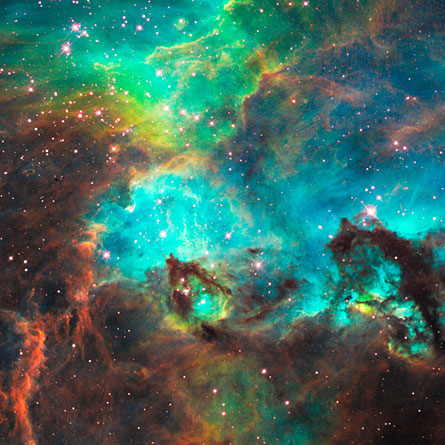
On August 10, one of Hubble’s cameras homed in on a region of gas and dust that surrounds the star cluster NGC 2074, about 170,000 light-years from Earth near the Tarantula Nebula. The nebula is one of the most intense star-forming regions in the local group of galaxies.
Ultraviolet radiation blazing from hot, young stars in the cluster has created dramatic ridges and valleys of dust. The intense radiation has also set aglow gaseous filaments and eroded away the dusty cocoons where newborn stars are being born, unveiling the hatchlings at the tops of serpent-shaped pillars. The region lies at the edge of a dark molecular cloud, an incubator for stars.

